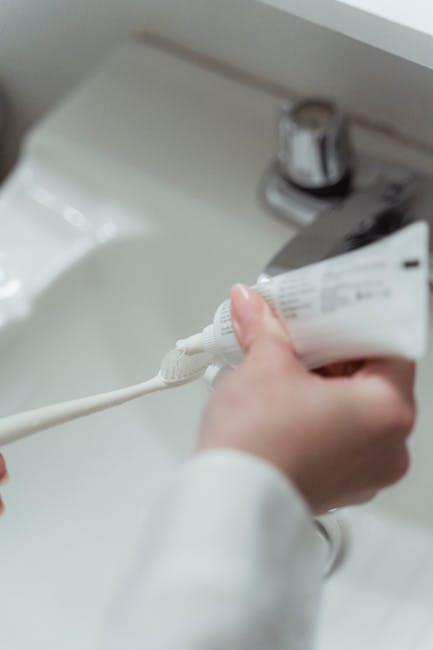Fluoride Ban Could Create Cavities For 1 Of Every 3 U.S. Kids – U.S. News & World Report
Dental health experts warn that a potential fluoride ban in the United States could lead to a dramatic rise in dental cavities among children. Recent studies show that fluoride has been a cornerstone in reducing tooth decay nationwide, but if restrictions are enforced, up to 33% of U.S. kids may face a higher risk of developing painful cavities. This article explores the implications of a fluoride ban, highlights fluoride’s benefits, and offers practical tips for parents to maintain children’s oral health amid changing policies.
Why Is Fluoride Important for Children’s Dental Health?
Fluoride is a naturally occurring mineral acclaimed for its ability to strengthen tooth enamel and prevent decay. For decades, water fluoridation, toothpaste, and dental treatments have played crucial roles in public health by reducing cavities in children and adults alike.
Key Benefits of Fluoride
- Remineralizes tooth enamel: Fluoride helps repair early decay before cavities form.
- Reduces harmful bacterial activity: It inhibits acid-producing bacteria in the mouth.
- Cost-effective public health measure: Communities with fluoridated water see lower dental treatment costs.
- Supports lifelong oral health: Children exposed to fluoride are less likely to suffer from cavities into adulthood.
Statistics Show the High Impact of Fluoride on U.S. Kids’ Oral Health
According to U.S. News & World Report’s recent coverage, if fluoride use is significantly decreased or banned, dental health professionals predict a surge in cavities for nearly one in every three American children. This is particularly critical given the CDC data showing that over 50% of children aged 6 to 11 already suffer from some form of tooth decay.
| Age Group | Current Cavities Rate | Projected Rate Without Fluoride |
|---|---|---|
| 6-11 years | 52% | 70% |
| 12-19 years | 61% | 78% |
What Could Trigger a Fluoride Ban?
Concerns over fluoride’s safety and environmental impact have sparked debates in several local governments. Opponents cite alleged health risks and advocate for fluoride-free alternatives in municipal water. While major health organizations continue endorsing fluoride as safe and effective, policy shifts could still reduce public fluoride exposure drastically.
Common Arguments for and Against Fluoride Use
| Pro-Fluoride | Anti-Fluoride |
|---|---|
| Extensively tested and scientifically proven to reduce cavities | Concerns about potential toxicity with excessive exposure |
| Cost-effective for public health programs | Environmental impact on water ecosystems |
| Recommended by leading dental and pediatric organizations | Right to choose fluoride-free water for personal use |
How Parents Can Protect Their Kids’ Teeth Without Fluoride
Even if fluoride bans take place, parents can take proactive steps to support their children’s oral health and minimize cavity risk. Here are practical tips endorsed by dental experts:
- Maintain rigorous oral hygiene: Brush twice daily with fluoride-free toothpaste and floss regularly.
- Use dental sealants: Ask your dentist about sealants to protect molars from decay.
- Limit sugary snacks and drinks: Reduce cavity-causing sugar intake and encourage water consumption.
- Schedule regular dental checkups: Early detection of decay can prevent bigger problems.
- Consider fluoride supplements: Ask your pediatrician or dentist if fluoride tablets or rinses are right for your child.
- Promote healthy eating habits: Foods rich in calcium, vitamin D, and phosphates help strengthen teeth.
Case Study: Fluoride Reduction Impacts in a U.S. Community
In 2012, a Midwestern city discontinued water fluoridation citing public concerns. Five years later, dentists reported a nearly 25% increase in childhood cavity rates. The surge was most pronounced in economically disadvantaged neighborhoods, where access to dental care was limited. This real-world example underscores fluoride’s critical role in preventing tooth decay especially among vulnerable populations.
Expert Opinions on Fluoride and Children’s Oral Health
Dr. Amanda Lee, a pediatric dentist with 15 years of experience, states, “Fluoride is one of the safest and most effective tools we have to protect kids’ teeth. Without it, we will see more cavities, more pain, and more expensive dental treatments down the line.” Meanwhile, other health advocates call for balanced conversations emphasizing informed choices and personalized care plans.
Conclusion: The Future of Fluoride and Public Oral Health
The possibility of a widespread fluoride ban poses a significant challenge to U.S. children’s dental health, putting one in three at greater risk of cavities. While debates continue, maintaining strong oral hygiene routines and consulting dental professionals remain vital strategies for parents. Fluoride, currently endorsed by major health bodies worldwide, has proven to be an invaluable asset in cavity prevention. Staying informed, advocating for scientifically-based decisions, and adopting healthy habits will be key to safeguarding the smile of the next generation.
Stay updated with U.S. News & World Report for the latest developments on fluoride policies and oral health advice.


